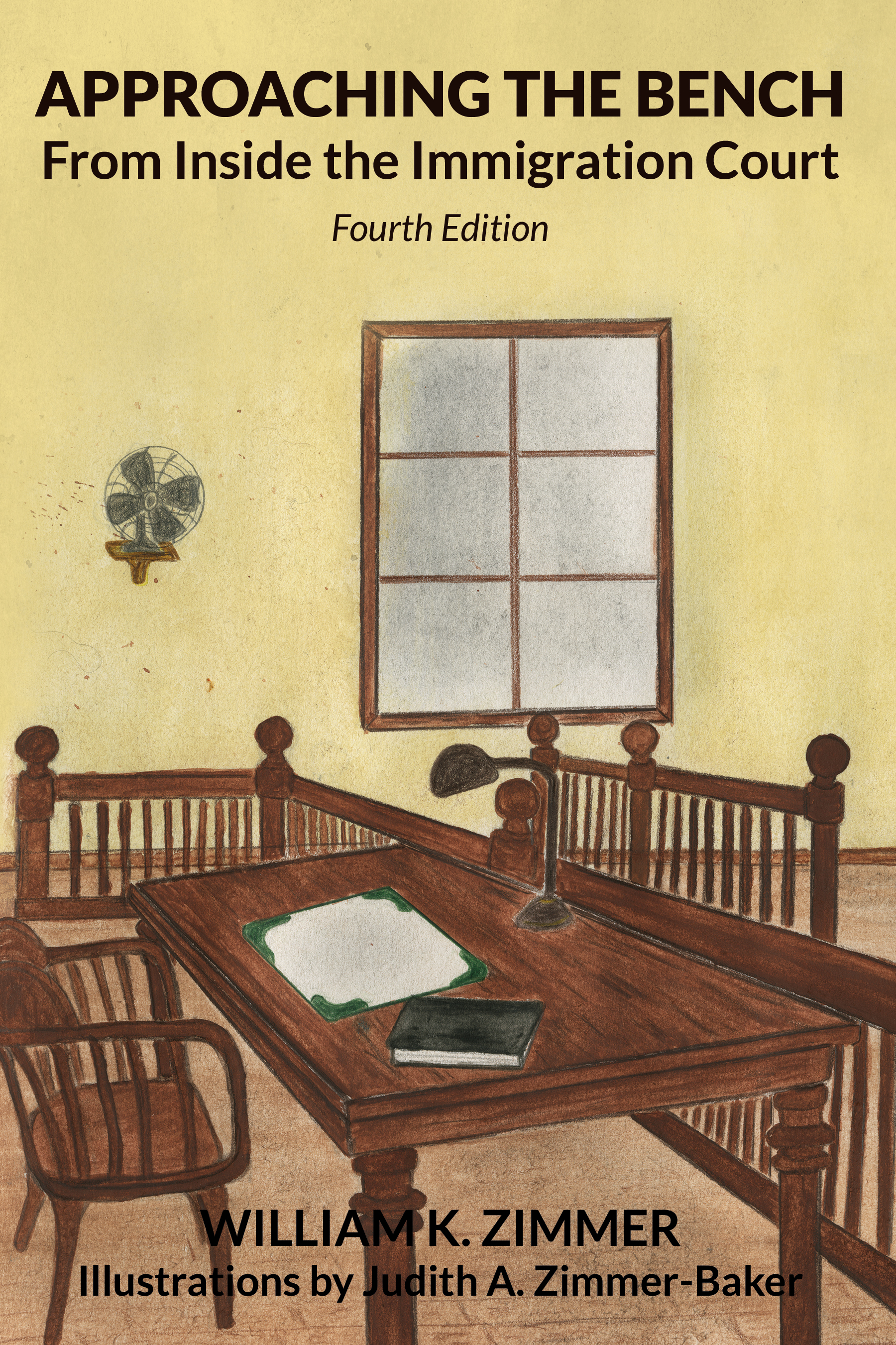Injury to a Child Under Texas Law is a Crime of Child Abuse as Described U.S. Immigration Law

The procedural history, facts of record, holding and rationale in Emmanuel Chukwuka Monsonyem v. Garland (June 7, 2022) No. 20-60952 are as follows:
Case History
On December 13, 2018, the Department of Homeland Security (DHS) served the Petitioner with a Notice to Appear (NTA).
The Petitioner filed a motion to terminate removal proceedings.
In April 2019, an Immigration Judge denied the Petitioner’s motion to terminate and sustained the removal charge on the NTA.
In August 2019, the Petitioner applied for cancellation of removal.
The Immigration Judge denied the Petitioner’s applications for cancellation of removal and voluntary departure in the alternative and ordered him removed from the United States.
The Petitioner appealed to the Board of Immigration Appeals ("BIA").
On September 15, 2020, the BIA dismissed the Petitioner’s appeal, denied his requests for cancellation of removal and alternatively voluntary departure, and ordered his removal from the United States.
The Petitioner then filed a petition for review.
Facts
- The Petitioner is a native and citizen of Nigeria, who was admitted to the United States on January 10, 2009 as an immigrant with an immigrant visa.
- On June 30, 2017, the Petitioner was convicted in Texas for the felony offense of injury to a child, in violation of Texas Penal Code § 22.04(a)(3).
- On December 13, 2018, the Department of Homeland Security (DHS) served the Petitioner with a Notice to Appear (NTA), charging that he is deportable and subject to removal under section 237(a)(2)(E)(i) of the Immigration and Nationality Act, as amended (“the Act”), as an alien who, at any time after admission, is convicted of a crime of child abuse.
- In an April 2019 hearing the Petitioner appeared with counsel before an Immigration Judge and admitted to the allegations set forth in the NTA (i.e. that he had been convicted as alleged) but denied that he is deportable and subject to removal under section 237(a)(2)(E)(i) of the Act. In particular, the Petitioner asserted that his offense of injury to a child under Texas law cannot be classified as a crime of child abuse.
- The Petitioner then filed a motion to terminate removal proceedings, arguing that his conviction for injury to a child under § 22.04(a)(3) of the Texas Penal Code did not render him removable under section 237(a)(2)(E)(i) of the Act.
- The Immigration Judge denied the Petitioner’s motion to terminate and sustained the removal charge under section 237(a)(2)(E)(i) of the Act.
- In August 2019, the Petitioner applied for cancellation of removal for permanent residents under section 240A(a) of the Act.
- The Immigration Judge denied the Petitioner’s application for cancellation of removal as well as his alternative application for voluntary departure under section 240B(b) of the Act, and ordered his removal from the United States.
- The Petitioner appealed the Immigration Judge’s decision to the BIA.
- On September 15, 2020, the BIA dismissed the Petitioner’s appeal, denied his application for cancellation of removal and his alternative application for voluntary departure, and ordered his removal from the United States.
- Proceeding pro se (i.e. legalese literally meaning “for self” indicating a person who is not represented by an attorney or advocate), the Petitioner submitted a petition for review.
Held
Petition for Review DENIED in part and DISMISSED in part
Rationale
The Petitioner generally challenged the decisions of the Immigration Judge and the BIA by claiming that the BIA erred in affirming the Immigration Judge’s determination that he was removable under section 237(a)(2)(E)(i) of the Act based on his conviction for violating § 22.04(a) of the Texas Penal Code; and that the Immigration Judge had erred in denying his application for cancellation of removal.
Specifically, the Petitioner asserted that his removal charge is founded on section 237(a)(2)(E)(i) of the Act which specifically describes crimes against children, but § 22.04(a) of the Texas Penal Code is concerned with crimes against children and elderly and disabled individuals. Therefore, according to the Petitioner, § 22.04(a) of the Texas Penal Code is broader than the generic offense described in his removal charge. In other words, the Petitioner argued that no categorical match existed between the State offense for which he was convicted and the generic federal offense to which it was compared to justify the DHS removal charge.
Thus, the Petitioner insisted that, as a matter of law, without a categorical match between his State offense and the generic offense described in his removal charge the Immigration Judge and the BIA erred by determining that he was subject to removal as charged.
The Fifth Circuit Court of Appeal reasoned as follows:
Removal Charge
- The Petitioner is correct. § 22.04(a) of the Texas Penal Code is categorically overbroad when compared to section 237(a)(2)(E)(i) of the Act.
- However, the fact that § 22.04(a) of the Texas Penal Code is overbroad is not the end of the matter.
- If the State statute “sets forth elements in an alternative or disjunctive structure, it is considered divisible, and a second approach is available to [us].” United States v. Martinez Rodriguez, 857 F.3d 282, at 285 (5th Cir. 2017). “Known as the modified categorical approach this approach allows [us] to pare down a prior conviction under a divisible statute by consulting certain materials,” such as the indictment, a written plea agreement, or the transcript of a plea colloquy. United States v. Martinez Rodriguez, at 285.
- The BIA concluded that § 22.04(a) of the Texas Penal Code is divisible as to victim class and applied the modified categorical approach over the Petitioner’s objection.
- The Fifth Circuit Court of Appeal then considered the text of § 22.04(a) of the Texas Penal Code, relevant State court precedents, Texas’ pattern jury instructions, and the Petitioner’s record of conviction to determine whether § 22.04(a) of the Texas Penal Code is divisible as to victim classes:
- An affirmative defense provided in § 22.04(a)(m) of the Texas Penal Code suggests that the statute is divisible as to victim classes. In particular, that subsection makes it an affirmative defense to prosecution for injury to a disabled individual. This defense, or one like it, is not offered to defendants accused of crimes against children or elderly individuals. The limited availability of this defense strongly suggests that injury to a disabled individual is a distinct offense from injury to a child or injury to an elderly individual under Texas law.
- Texas case law also suggests that § 22.04(a) of the Texas Penal Code is divisible as to victim classes. As noted by the BIA, Texas court cases: show that violations of section 22.04(a)(3) are routinely prosecuted and adjudicated by selecting one class of victim to the exclusion of the others—that is, as either “bodily injury to a child,” or “bodily injury to an elderly individual,” or “bodily injury to a disabled individual,” but not as “bodily injury to [any of the three] or [more than one of the three].”
-
- The Texas pattern jury instructions further support the DHS claim that § 22.04(a) of the Texas Penal Code is divisible. The Texas pattern jury instructions provide juries with the following fill-in-the-blank charge:
The defendant, AB, stands charged by indictment with the offense of causing ________ (serious bodily injury; OR serious mental deficiency, impairment, or injury; OR bodily injury) to ________ (a child; OR an elderly individual; OR a
disabled individual), alleged to have been committed on or about ________ [date], in ________ County, Texas.
The charge then provides accompanying definitions for “child,” “elderly individual,” and “disabled individual.” See Texas Crim. Jury Charges § 6:2360 (2019 ed.).
-
- According to the Petitioner’s indictment, the State of Texas charged the Petitioner with intentionally and knowingly causing bodily injury to “a child younger than 14 years of age.” The Petitioner’s guilty plea stated that he was charged with, and pleaded guilty to, the felony offense of “injury to a child” pursuant to § 22.04(a) of the Texas Penal Code. The indictment and plea deal made no reference to elderly or disabled individuals. The use of one “alternative term to the exclusion of all others” could indicate “that the statute contains a list of elements, each one of which goes toward a separate crime.” Mathis v. United States, 579 U.S. 500, at 519 (2016).
- Based on § 22.04(a) of the Texas Penal Code’s text, relevant state court cases, Texas’ pattern jury instructions, and the record of prior conviction itself, § 22.04(a) of the Texas Penal Code is divisible as to victim class.
- Clearly the Petitioner was charged with, and pleaded guilty to, causing bodily injury to a child.
- Therefore, the BIA did not err in finding the Petitioner subject to removal pursuant to section 237(a)(2)(E)(i) of the Act, as an alien who, at any time after admission, is convicted of a crime of child abuse.
Cancellation of Removal
- Although a pro se litigant’s claims are construed liberally, a pro se litigant “must still brief the issues and reasonably comply with” Rule 28 of the Federal Rules of Appellate Procedure. Rui Yang v. Holder, 664 F.3d 580, at 589 (5th Cir. 2011).
- Even pro se arguments must be briefed to be preserved and they may not be incorporated from prior pleadings. See Yohey v. Collins, 985 F.2d 222, at 224–25 (5th Cir. 1993).
- The Petitioner’s brief on appeal is an incomplete photocopy of his prior brief before the BIA. The arguments in the photocopied brief are directed to the BIA, not to the appellate court. This is insufficient to effectively raise the arguments therein as a challenge to the BIA’s decision in this appeal. See Yohey, 985 F.2d at 224–25.
- Therefore, any issues concerning cancellation of removal and post-conclusion voluntary departure have been waived.
Commentary
The categorical approach to classification of an offense in the context of immigration law consists of a direct comparison of the statutory elements of the offense under consideration (usually a State offense) to the statutory elements of the generic federal offense or federal offense referenced in the immigration statute that is being applied. If all of the elements of the offense under consideration match each of the elements in the generic federal offense or federal offense referenced in immigration statute that is being applied there is no need for further inquiry. The offense under consideration must fall into the statutory category described in the applicable immigration statute according to basic inductive reasoning.
The United States Supreme Court originated and described this hypothetical categorical approach as a means of narrowing the scope of classifying offenses as aggravated felonies to the comparison of statutory elements, rather than the facts underlying the offense under scrutiny. Taylor v. United States, 495 U.S. 575 (1990) (“The sentencing court must generally adopt a formal categorical approach . . . looking only to the fact of conviction and the statutory definition of the predicate offense, rather than to the particular underlying facts.”).
Taylor v. United States involved the application of sentencing guidelines in United States District Court. It serves, however, as guidance for application of the categorical approach in immigration proceedings. The United States Supreme Court further reiterated that, under the categorical approach, courts “focus solely on whether the elements of the crime of conviction sufficiently match the elements of [the] generic [crime], while ignoring the particular facts of the case.” Mathis v. United States, 136 S. Ct. 2243, at 2248 (2016).
The deference given to the BIA’s definition of “crime of child abuse” in section 237(a)(2)(E)(i) of the Act by the Fifth Circuit Court of Appeal seems noteworthy.
According to the BIA, the term “crime of child abuse” means:
any offense involving an intentional, knowing, reckless, or criminally negligent act or omission that constitutes maltreatment of a child or that impairs a child’s physical or mental well-being, including sexual abuse or exploitation.
Matter of Velazquez-Herrera, 24 I. & N. Dec. 503, at 512 (BIA 2008).
The BIA devised its definition of “crime of child abuse” out of necessity because Congress had not provided a definition.
The BIA gleaned the specific elements of its “crime of child abuse” definition from seven federal statutes. Presuming that Congress intended a broad definition, the BIA rejected a narrower definition proposed by amici curiae (i.e. legalese literally meaning “friends of the court” who are individuals or organizations that are not parties to a controversy but who volunteer or are court-invited to advise on a matter before the court) based on section 3 of the Violence Against Women and Department of Justice Reauthorization Act of 2005, Pub. L. No. 109-162, 119 Stat. 2960, 2964 (enacted Jan. 5, 2006) ten years subsequent to amendments involving section 237(a)(2)(E)(i) of the Act by the Illegal Immigration Reform and Immigrant Responsibility Act of 1996.
Here is another example of the hazy fog that can arise from the categorical method to baffle the most wary and sagacious adjudicator. In this example, the fog enveloped aggravated felony classification.
Rape which is an aggravated felony under section 101(a)(43)(A) of the Act is not defined in any federal statute that can serve as a generic federal offense for comparison to a State offense. The BIA wrestled its way out of this predicament with the invention of an imaginary generic federal rape offense by defining “rape” according to its “ordinary, contemporary meaning” in 1996, when “rape” was added to section 101(a)(43)(A) of the Act. Matter of Keeley, 27 I&N Dec. 146 (BIA 2017). See, also, Matter of Alvarado, 26 I&N Dec. 895, at 897 (BIA 2016) (finding “it appropriate to adopt a generic definition [of a crime] based on how [it] was commonly defined” when section 101(a)(43) of the Act was enacted). This creative and imaginary patch to the aggravated felony classification procedure blends easily with the categorical classification approach because it also appears as clear as mud.
Having broached the categorical classification approach, it is impossible to avoid mentioning the more expansive modified categorical classification approach.
Before resorting to a modified categorical approach, a distinction must be made between elements of an offense (which must be proven beyond a reasonable doubt) and the means of committing the offense (for which proof is not necessary to obtain a conviction, but might appear in the criminal statute). Quoting Mathis, the BIA acknowledged that “the divisibility of a State statute depends on whether State law establishes that statutory alternatives are discrete ‘elements’ or alternative ‘means’ of committing an offense. Mathis v. United States, 136 S. Ct. at 2256.” Matter of Chairez-Castrejon, 27 I&N Dec. 21 (BIA 2017). The determination of whether parts of a State statute are “elements” or “means” typically involves a review of case law in the State where the conviction occurred. As demonstrated in Emmanuel Chukwuka Monsonyem v. Garland (June 7, 2022) No. 20-60952, decision makers may also resort to review of jury instructions, indictments, plea colloquies, and plea agreements.
In short, an “element” of an offense must be proven beyond a reasonable doubt to obtain a conviction. Whereas, the “means” of committing an offense is the way in which an offense is committed that need not be proven to obtain a conviction.
Once an offense under consideration for classification is deemed divisible, lawyers and judges can resort to the modified categorical approach. This opens the door to review of indictments, jury instructions, plea colloquies and plea agreements.
What might seem confusing is that the same evidentiary material that would become available for reference when applying the modified categorical classification approach is scrutinized to determine whether or not the modified categorical classification approach should be used in the first place.
The categorical and modified categorical methods for classifying offenses under various categories described in federal law for immigration purposes are not the first or only examples of baffling immigration law complexity. Chief Judge Irving R. Kaufman placed immigration law in the same dubious category as tax law with this opening comment in one of his appellate decisions:
We have had occasion to note the striking resemblance between some of the laws we are called upon to interpret and King Minos's labyrinth in ancient Crete. The Tax Laws and the Immigration and Nationality Acts are examples we have cited of Congress's ingenuity in passing statutes certain to accelerate the aging process of judges.
See Lok v. Immigration and Naturalization Service, 548 F.2d 37 (2nd Cir. 1977).

